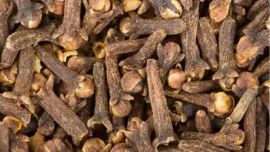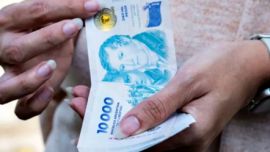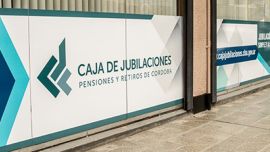Pushed by a wave of demonstrations by women’s groups, Argentina seems closer than ever to legalising abortion.
The protests and shifting public opinion have led President Mauricio Macri to call on Congress to launch a debate on a broader legalisation of abortion in the homeland of Pope Francis, which currently allows the procedure only in cases of rape or risks to the mother’s health.
A bill allowing elective abortion in the first 14 weeks of pregnancy was introduced in Congress earlier this year with the backing of 70 lawmakers from across the political spectrum.
The bill needs 129 votes in the 257-seat Chamber of Deputies and then would go to the Senate. The lower house vote is expected to take place in June. Macri has said that even though he remains anti-abortion, he would not veto the bill if passed.
Natalia Rodas welcomes this unprecedented opening to greater abortion rights in Argentina. The 31-year-old housemaid recently found herself pregnant and in dire economic straits after the father refused to accept responsibility.
Desperate and alone, she went to a pharmacy on the poor outskirts of the capital and paid twice her monthly salary for the drug misoprostol. Unsure if the drug would harm her without medical supervision, she fearfully took the pills and aborted.
“An illegal abortion has made me live through some horrible situations,” Rodas said. “If something goes wrong, who do you call? Who do you fall back on? No, you just die.”
The Health Ministry estimates that between 370,000 to 522,000 Argentine women undergo illegal abortions each year and thousands of women, mainly poor, are hospitalised each year for complications. It is the main cause of maternal death.
“What point is there in penalising abortions if they continue to happen?” asked Nelly Minyersky, a 90-year-old lawyer and one of the authors of the bill, who underwent an illegal abortion more than 50 years ago.
Although therapeutic abortions to protect the mother are allowed in Argentina, advocates say doctors and judges often continue to block women from carrying them out despite a 2012 Supreme Court ruling that was supposed to remove barriers and take judges out of these decisions.
The Catholic Church in Argentina is leading the resistance against the initiative.
“When you deny the most elemental right to live, all human rights hang by a thread,” said Gustavo Carrara, who was recently named auxiliary bishop by the pope. “If there’s an excuse to eliminate a human life, there will always be reasons to exclude humans who are a nuisance from this world.”
FOREFRONT
In recent years, Argentina has been at the forefront of social movements in the region. In 2010, it became the first country in Latin America to legalise same-sex marriage.
More recently, the Ni Una Menos movement that was created in Argentina to fight gender-based violence has grown into a global phenomenon.
These days, demonstrators have filled the streets in front of Congress wearing the green handkerchiefs that symbolise the abortion rights movement. Even dozens of lawmakers wore them when the bill was introduced.
“The green handkerchiefs will remain as a record of the history of our great struggle,” said Betty Maidana, 48, who heads the Buenos Aires cooperative that makes them.
A survey conducted the Buenos Aires-based Tendencias consultancy in March found that 48.5 percent of the 7,600 people questioned were in favour of a broader legalisation of abortion, while 35.6 percent opposed it and 16 percent didn’t have an opinion. The survey’s margin for error was 1.2 percentage points.
Many women locally use misoprostol to end first-trimester pregnancies. The drug is only sold under prescription, but doctors often fear that prescribing it could expose them to a lawsuit since the pills are usually bought on the black market.
Doctors who perform abortions, and women who have illegal abortions, can face from one to four years in prison in Argentina. In Latin America, only Nicaragua, Honduras, the Dominican Republic and El Salvador prohibit abortion without exceptions.
For the poorest women living in the slums, a box with 16 tablets of misoprostol that costs about US$170 is out of reach. Rodas says she paid an inflated price of about US$300 — she earns US$150 a month — to buy the drug without a prescription.
For many poor women, the methods used to induce an abortion include using an IV tube with a sharp wire clothes hanger or knitting needle to try to break the amniotic sac inside womb. Others, drink herbs, insert dubious non-abortive pills in the vagina, or pump toxic mixtures, which can cause ulcers, haemorrhage and ultimately severe infections, and death.
“When an abortion is safe, it’s less complicated than pulling out a tooth. It’s an easy practice that doesn’t put the women’s health or life at risk,” said Analia Bruno, a physician, who is part of Argentina’s network of health professionals in favour of abortion. – AP
by By Deborah Rey
























Comments